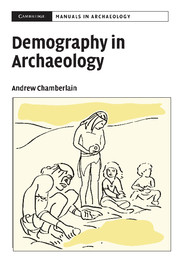Book contents
1 - INTRODUCTION
Published online by Cambridge University Press: 02 December 2009
Summary
THE PRINCIPAL CONCERNS OF DEMOGRAPHY
What is a population?
The term ‘population’ refers to a bounded group of living individuals, but the concept of a population is fluid depending on whether it is used in a biological or a sociocultural context. In biology, a population is a group of interbreeding organisms, or more formally a cluster of individuals which have a high probability of mating with each other compared to their probability of mating with members of some other population (Pianka, 1978). Biological populations have many properties, only some of which are the primary concern of demography. For example, the interaction between a population and its environment is the concern of ecology, while the variation of genes within and between populations is the concern of population genetics and evolutionary biology. Demography considers the population as a singular object for quantitative analysis, and seeks to explain variations in population size, structure and dynamics.
An alternative definition, more frequently encountered in the human sciences, views the population as a social unit in which individuals are linked by their common linguistic, cultural or historical experience. This kind of population, sometimes labelled a ‘community’, a ‘culture’ or a ‘people’, refers to a group of individuals united by their mutual social recognition of ancestry and kinship, by other cultural affinities and by co-residence or geographical proximity (Kreager, 1997). This definition emphasises socioeconomic and sociocultural factors in the formation and maintenance of human populations.
- Type
- Chapter
- Information
- Demography in Archaeology , pp. 1 - 14Publisher: Cambridge University PressPrint publication year: 2006

